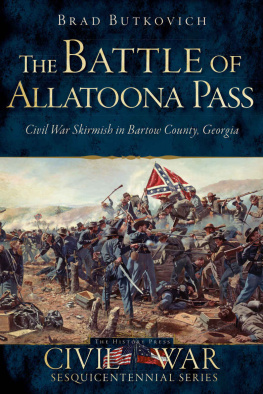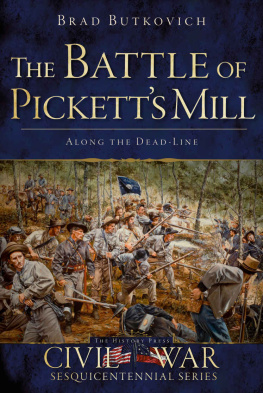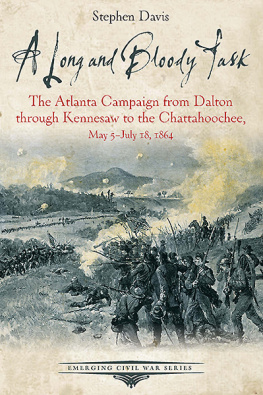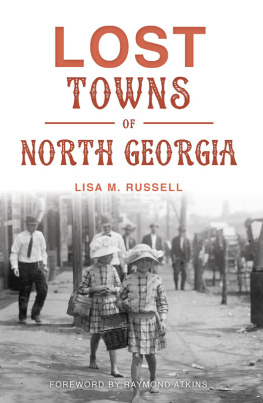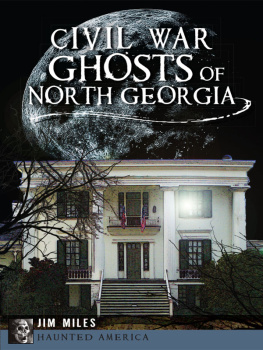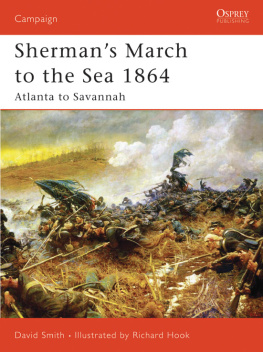
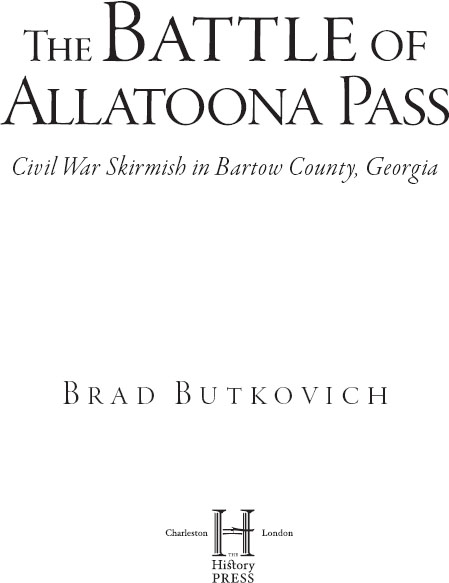
Published by The History Press
Charleston, SC 29403
www.historypress.net
Copyright 2014 by Brad Butkovich
All rights reserved
Cover image: The Battle of Allatoona Pass by Don Troiani.
First published 2014
e-book edition 2014
ISBN 978.1.62584.992.2
Library of Congress Cataloging-in-Publication Data
Butkovich, Brad.
The Battle of Allatoona Pass : Civil War skirmish in Bartow County, Georgia / Brad Butkovich.
pages cm
Includes bibliographical references and index.
print edition ISBN 978-1-62619-461-8
1. Allatoona Pass, Battle of, Ga., 1864. I. Title.
E476.87.B89 2014
973.737--dc23
2014019117
Notice: The information in this book is true and complete to the best of our knowledge. It is offered without guarantee on the part of the author or The History Press. The author and The History Press disclaim all liability in connection with the use of this book.
All rights reserved. No part of this book may be reproduced or transmitted in any form whatsoever without prior written permission from the publisher except in the case of brief quotations embodied in critical articles and reviews.
To Anya, Lexi and Jack. You are my inspiration.
Contents
Preface
Not only does a historian have to get the facts straight, but he or she also has to decide how to present those facts to the reader. This can be a daunting task, and each author tackles the effort differently. I think it is helpful to readers to explain how and why some of the information in the book is presented the way it is. How things read in a narrative is an organic element of the story and influences how the information is perceived by the reader.
The United States militarylike most militaries throughout time, for that matteris a very organized institution, as was its Confederate counterpart. It loved naming things and, in fact, required individual designations for objects and units. Logistics are the key to victory. Only the generals and politicians who can get the food and ammunition to the front lines will win, regardless of the tactical acumen of their field leaders. In order to do so, everything must have a name and a place. This holds true for the military units themselves. Those involved at Allatoona Pass have similar and confusing names, so its worth a few moments to explain the differences between them.
The most important difference is the armies of the two combatants. The Confederate units at the battle were part of an army called the Army of Tennessee. On the other hand, the Federals were part of the Army of the Tennessee. Smaller unitssuch as corps, divisions and brigadeseither were given a numerical designation, in the case of the Union, or were named after their commander, in the case of the Confederacy. So, for example, a Union corps would be known as the Fifteenth Corps, while a Confederate one was known as Stewarts Corps. I prefer to write out the numerical designations for Union corps, as opposed to the popular use of Roman numerals. The participants themselves did so in their own writings, and I think it flows better and looks more natural in prose. Confederate units were proper names, so both the name of the leader and the unitbe it corps, division or brigadeare capitalized. Federal units, if referred to by their commanding officer, are not. Regiments on both sides were given numerical designations based on the state from which they were raised. So, on one hand, you would have the 4th Minnesota fighting for the North, and the 29th North Carolina for the South. Often you could encounter regiments from the border states fighting on opposite sides, such as Missouri or Kentucky, but thankfully, this did not occur at Allatoona. Unless otherwise noted, all the units that fought at Allatoona did so as infantry. There were ex-cavalry units present, such as the 10th Texas Cavalry (dismounted) and the 1st and 3rd Missouri Cavalry. However, they had turned in their horses years before and fought dismounted as infantry. They are referred to as simply the 1st and 3rd Missouri in the text, with their proper designation in the Order of Battle.
Several place names have changed in the intervening 150 years. Big Shanty is now the city of Kennesaw, while what was once Kennesaw Station is now merely a neighborhood outside the current Kennesaw battlefield park. In all cases, I have used the historical names that were in use in 1864. I used similar convention with quotes from the participants. Direct quotes are presented in the text exactly as the original author wrote them, errors and all, without the conventional [sic]. I find the use of [sic] to be jarring, and showing how the original author wrote adds flavor and character to the prose. The Order of Battle provides a breakdown of the units that fought the battle, as well as their strengths and casualties if available. Hopefully this book will provide a comprehensive overview of the battle and lead to a more thorough understanding of the events leading up to and occurring on that memorable day.
Another fascinating and often overlooked facet of the battle at Allatoona is the campaign that preceded it. Most histories of the battle only mention in passing the details of the march leading up to the battle. Hood crosses the Chattahoochee, Sherman follows, the Confederates tear up the Western & Atlantic Railroad and then the Confederates arrive at the pass. I believe that there is a wealth of information that has been left out of print because of this oversight. The Confederate supply chain was in deplorable condition, and Sherman almost started his pursuit from Atlanta too late to affect the outcome of the battle. The Union garrisons along the railroad led a less than safe existence, and they also put up a much more spirited fight for their posts than previously recorded. All of these details deserve to be written and preserved for history.
Acknowledgements
This book, my second, gave me the opportunity to reach out and call on a variety of sources. The Battle of Allatoona was a relatively small affair, and this cries out for individual anecdotes and personal sources such as letters and diaries. I had the fortune of establishing contact with quite a few individuals who were able to provide me with previously unpublished material. For that, I am grateful.
First, I would like to thank the staff of the Atlanta History Center. They were extremely helpful and understanding to a first-time researcher such as myself. They patiently waited and pulled practically every map, photograph and journal in the collection of noted Atlanta historian/artist Wilbur Kurtz Sr. Im sure it was tedious, but the research was immensely helpful to me and laid the groundwork for several future projects.
The 7th Illinois Infantry and its Henry repeating rifles played prominent roles in the battle. Historians as well as readers are drawn to the unique and the different. The thought of a Civil War battle fought with modern weapons such as the Henry and the Spencer family of firearms has caught the publics imagination for decades. With the help of Andrew L. Bresnan of the National Henry Rifle Company, I was able track down several primary sources detailing the actions of the 7th on that fateful October day. He also pointed me to the Abraham Lincoln Presidential Library in Springfield, Illinois. Reference librarian Gwen Podeschi helped me by tracking down and copying pages out of the large and unwieldy bound collection of annual reunion programs for the regiments veterans. Her help was instrumental in discovering how the regiment came to possess the Henrys, along with other helpful anecdotes.
Next page
